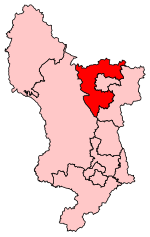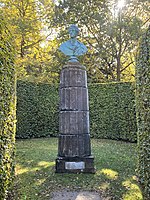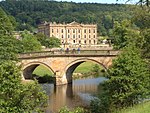Beeley Moor
Archaeological sites in DerbyshireMoorlands of EnglandMountains and hills of DerbyshireMountains and hills of the Peak DistrictPeak District ... and 2 more
Scheduled monuments in DerbyshireUse British English from August 2020

Beeley Moor is a small gritstone upland area in the Derbyshire Peak District of central and northern England, near the villages of Beeley and Baslow. Its highest point is 371 metres (1,217 ft) above sea level.
Excerpt from the Wikipedia article Beeley Moor (License: CC BY-SA 3.0, Authors, Images).Beeley Moor
Harland lane, Derbyshire Dales
Geographical coordinates (GPS) Address Nearby Places Show on map
Geographical coordinates (GPS)
| Latitude | Longitude |
|---|---|
| N 53.21 ° | E -1.565 ° |
Address
Harland lane
Harland lane
S45 0AF Derbyshire Dales
England, United Kingdom
Open on Google Maps











